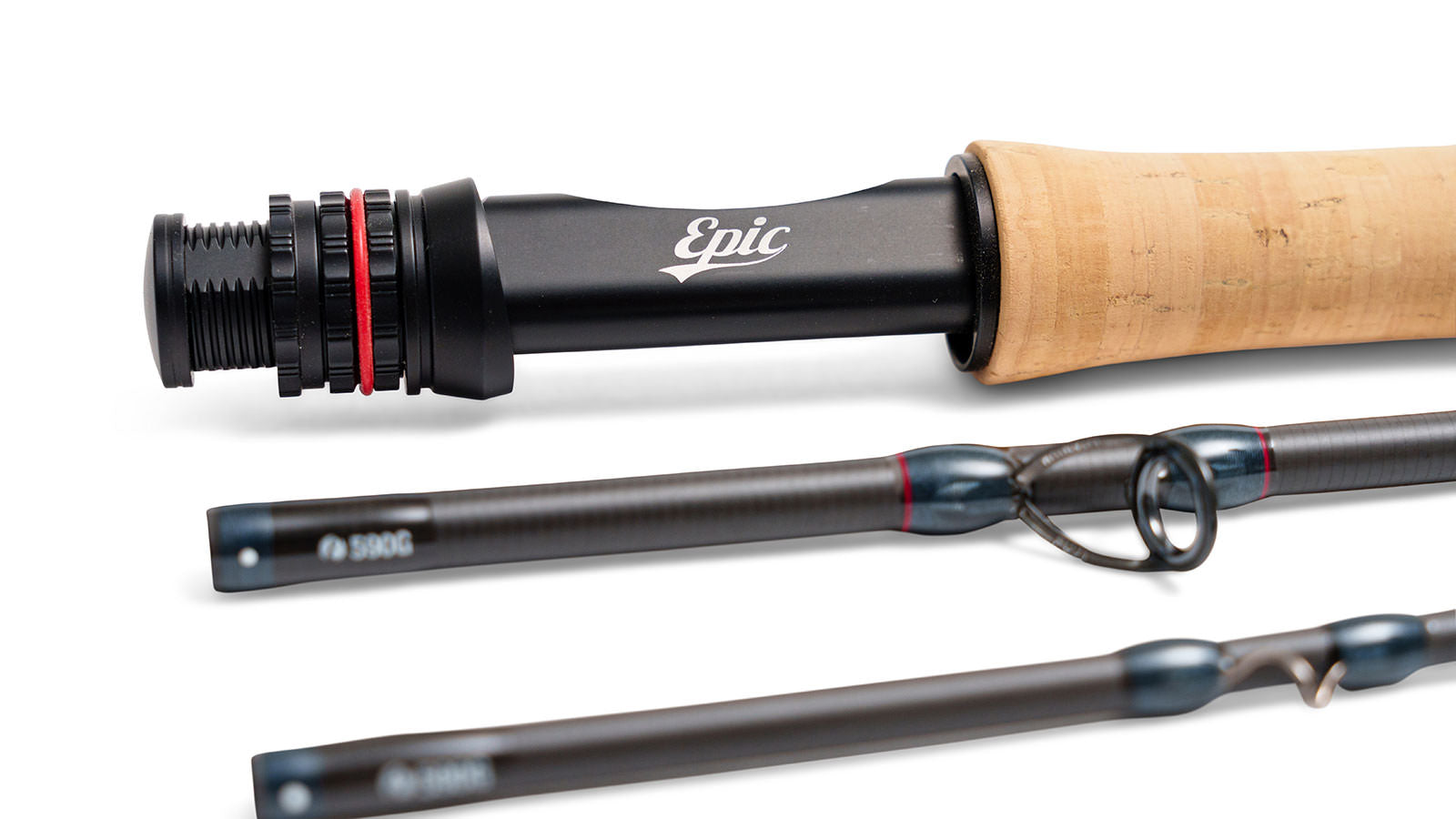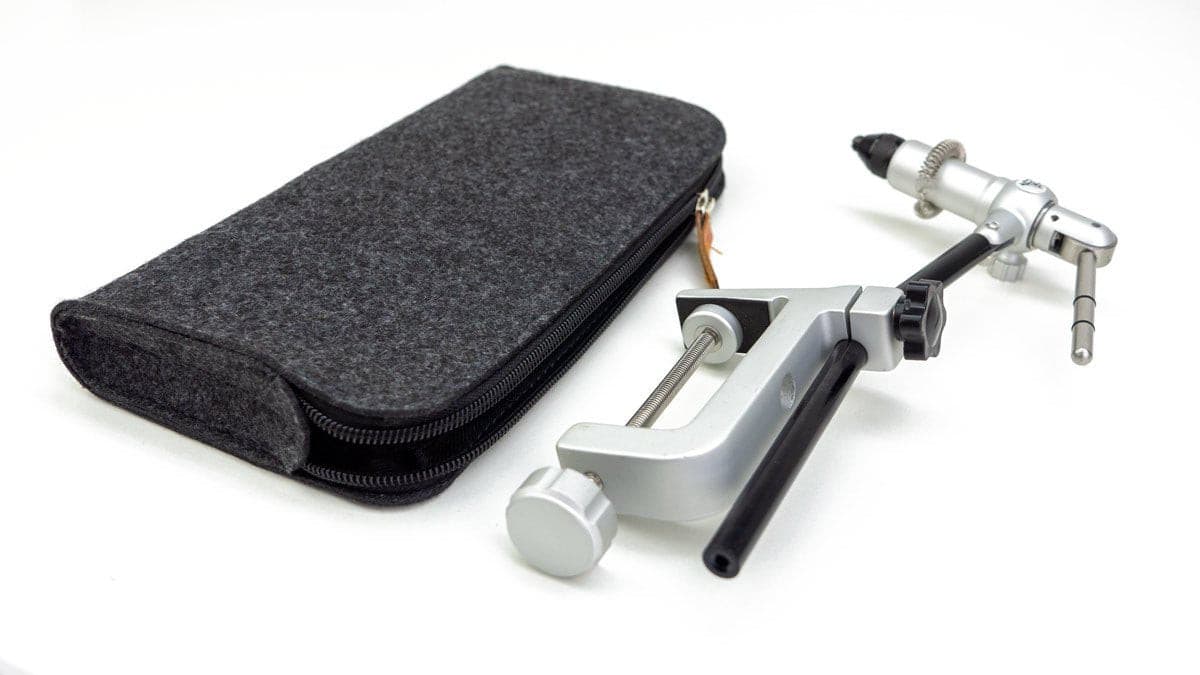Duncan Loop
The Duncan loop is and adjustable loop knot formed from the uni knot. It is useful when you want to allow your subsurface flies to have more action, and it is handy for rigging a movable dropper, which allows you to quickly and easily attach another fly to your nymphing system. Since it is a sliding loop (you can more or less close it tight and adjust the loop later), this knot is a good candidate if you like to rig your dropper nymphs ahead of time. Simply attach your nymph to 12 to 16 inches of tippet, tie a Duncan loop in the other end, and wrap them around a store-bought or homemade dropper holder.
1. Thread the tippet through the eye of the hook and bend the tag around to form a loop. Pass the tag through the loop four to six times.

 3. Pull on the standing line until the loop is the desired size, and then grasp the tag with forceps and pull firmly. If you don’t want a loop, continue to pull the standing line until the knot touches the eye of the hook. Grasp the tag, tighten, and trim the tag. When this knot is pulled tight, you have a uni knot, an adequate substitute for the clinch.
3. Pull on the standing line until the loop is the desired size, and then grasp the tag with forceps and pull firmly. If you don’t want a loop, continue to pull the standing line until the knot touches the eye of the hook. Grasp the tag, tighten, and trim the tag. When this knot is pulled tight, you have a uni knot, an adequate substitute for the clinch. 
Hook-Bend Dropper
To add a nymph dropper to a dry fly, simply take the tippet connected to the dropper and tie it to the bend of the dry-fly hood with your favorite knot (the aforementioned Duncan Loop works wonderfully). The distance between the dry fly and nymph can range from 4 inches to 6 feet.
This rig shines in shallow water or when larger indicators spook wary fish. Not only is it effective with one or more nymphs (John Barr’s hopper-copper-dropper system uses two nymphs below a buoyant hopper), but it is also effective with two dry flies. Use a larger fly to help you see a smaller one.

Orvis (Becker) Knot
The Orvis Company once set out to find the strongest knot for attaching the fly to the tippet. Larry Becker of Rockford, Illinois, answered the call. Here is Becker’s creation, a small, strong variation of a figure-eight knot that is easily tied and used little tippet material.
1. Pass the line through the eye of the hook. Pass the line behind the standing line and to the front again.
 2. Pass the tag through the back side of the first loop, and the through the back side of the second loop. Make two wraps around the second loop. Lubricate.
2. Pass the tag through the back side of the first loop, and the through the back side of the second loop. Make two wraps around the second loop. Lubricate.
 3. Draw the knot nearly closed by pulling the fly and tag apart. Release the tag and finish tightening by pulling fly and standing line firmly. Trim the tag.
3. Draw the knot nearly closed by pulling the fly and tag apart. Release the tag and finish tightening by pulling fly and standing line firmly. Trim the tag.

Seaguar Knot
This knot, which I first saw in Lefty Kreh’s Fishing Knots, is an effective way to make a connection that is stronger than a surgeon’s knot and easier to tie. In heavier tippets, you can just use your pointer finger instead of forceps. The line manufacturer Seaguar recommends this knot for fluorocarbon.
1. Place the leader and tippet together with working ends opposite each other and form a loop. Hold the leader and tippet firmly together. Insert the forceps into the loop and make three twists.
 2. Gently grasp the leader and tippet, and pull down through the loop.
2. Gently grasp the leader and tippet, and pull down through the loop.
 3. Remove the forceps and dress and lubricate the knot. Tighten by pulling first on all four strands and finally by pulling on the two standing lines. Trim the tags.
3. Remove the forceps and dress and lubricate the knot. Tighten by pulling first on all four strands and finally by pulling on the two standing lines. Trim the tags.

Uni to Uni
You can also use the versatile uni to build or add tippet to your leader. When finished, the uni to uni knot resembles a blood knot and is equally strong – the difference is that the tags come out of each end of the knot, rather than the middle.
1. Place the two lines together with working ends opposite each other. Bend tag A around to form a loop and pass the tag through the loop up to six times.
 2. Pull tag A and standing line A enough to make the knot snug but do not tighten too much. Repeat the procedure using line B in the opposite direction. Lubricate both knots. Pull on the two standing lines to slide the two knots together. Tighten by pulling on all four strands & trim the tags.
2. Pull tag A and standing line A enough to make the knot snug but do not tighten too much. Repeat the procedure using line B in the opposite direction. Lubricate both knots. Pull on the two standing lines to slide the two knots together. Tighten by pulling on all four strands & trim the tags.

Joe Mahler is one of the USA's leading fly casting instructors and author and illustrator of “Essential Knots & Rigs for Trout” and “Essential Knots & Rigs for Salt Water”. You can Book a fly casting lesson with Joe via his website here

































